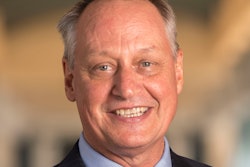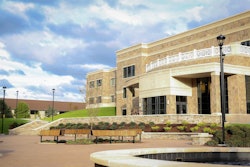A new, national survey study examined programs designed to help first-year students become acclimated to college life and offered suggestions on how these vital programs can be created at two-year institutions to better support students.
The survey, “The First-Year Experience in Two-Year Public Postsecondary Programs,” revealed that programs for first-year college students are the norm at four-year universities, but are less common at two-year colleges where such programs can be equally useful.
 Rayane Alamuddin
Rayane AlamuddinThe composition of first-year programs differ from school to school but all aim to help students transition smoothly through educational programming.
That was not the case, however, at two-year universities where the concept didn’t take root as quickly. The trend is starting to catch on, partly because of evidential information from four-year colleges, according to the study.
First-Year Experience (FYE) programs vary and can include mentorships and first-year seminars, but are designed to retain students. Two-year colleges have low retention, according to the study, thus making the programs especially useful to those institutions.
Those at two-year colleges are often enrolled in school part-time, live off campus and work. These are all factors in student retention, according to the study. Work and family obligations are other reasons affecting student retention; this is less likely to be the case at four-year colleges.
The same circumstances that make it difficult for two-year students to finish school also make it a challenge for colleges to design fitting FYE programs, according to the study.
The survey includes information from about 175 institutions— it is a mix of two-year and four-year colleges— but mainly the former, said Rayane Alamuddin, associate director for research and evaluation at Ithaka S+R, the research and strategic guidance group that worked on the survey study.
“What I did find surprising is that more institutions offered FYE programs than I expected,” she said.
An important caveat to consider is the colleges that offer FYE programs may have been more likely to respond to the survey than those who didn’t, Alamuddin said.
Orientation and first-year seminars or success courses are the most common FYE offerings, according to the study.
The study notes a, “sizable minority” report offering a coordinated program that serves first-year students.
Institutions, two-year and four-year, that have coordinated programs for first-year students are more likely to offer programs specific to subgroups that include underserved students, low-income, low-performing and high-achieving students.
“Focusing on sub-sections allows schools to be more intentioned in their programming,” Alamuddin said.
Findings and interviews suggest that if institutions created a dedicated program or department to handle FYE programs, then it may help two-year colleges provide more mission and evidence driven services to students, according to the survey.
Respondents told researchers that there are a number of factors are barriers to offering first-year programs at two-year colleges including financial resources and faculty resistance to change.
The survey came about when Ithaka S+R approached Jack Kent Cooke Foundation to partner on the study.
“They came to us and said, ‘we know that a lot is happening … how we can better support two-year [colleges]?’” Alamuddin added.
Alamuddin said that the purpose of the study is not to tell two-year colleges how to enhance and expand first-year programs, but to explore the national landscape of FYE programming and practices of institutions who serve two-year students.
“I think administrators are intent in getting a sense of what services are norm among similar institutions,” she said. “Institutions compete with each other as well as learn from each other.”
Jamie Rogers can be reached at [email protected]. You can follow her on Twitter @JamieJournals.





















